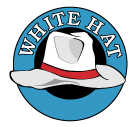Australian Megafauna
At the time of Aboriginal arrival in Australia, the dinosaurs were long dead but Australia had a range of very large and remarkable mammals. These big animals are usually referred to as �megafauna� . They included equivalents of giant rhino-like cows and giant sheep-like animals as well as very large animals resembling giant goannas, emus and kangaroos. These animals disappeared soon after the arrival of Aborigines. Various theories surround their disappearance, but most scientists (including Prof. Tim Flannery) feel that their extinction was due either directly or indirectly to the arrival of man. It is possible that, like the Dodo or creatures of the Galapagos, they were so unafraid of man that the Aborigines were able simply walk up to them and kill them. Other scientists believe that the fire farming introduced by Aborigines changed the environment in a way that led to the extinction of the megafauna and Dr John Magee believes that his research in 2005 verifies this. Archaeological finds in Lancefield (Victoria) show that both Aboriginal people and mega fauna were there at the same time about 26,000 years ago. For a while some thought climate change may have led to their extinction but recent scientific work in this area makes that seem highly unlikely. There are other scientist such as Dr Judith Field who believe that the arrival of Aborigines and the extinction of the megafauna are unconnected. See for instance this transcript of an ABC science show.
Well why did the disappearance of the megafauna make so much difference to Australian history? It is because some of them were prime candidates for domestication. And with domesticated animals would have come a whole new development path for Aboriginal people and Australia. Domesticated animals are a much more efficient source of protein than wild animals. A cow can produce much more protein through milk in its lifetime than simply being hunted once off in the wild. Similarly, a sheep through its wool can clothe many more people over its lifetime than it can by simply being killed once off in the wild. Domesticated horses and other animals can provide the power to make small areas of land arable. And all these animals produce fertiliser, which feeds back into the natural cycle. Domestication had proved so successful in other continents. However, with the extinction of the megafauna, Aboriginal people were left with no readily domesticable animals. (although if someone ever figures out how to harness up a kangaroo, you wouldn�t need a stump jump plough).
By the time Europeans arrived in Australia, a relatively small population of Aboriginal people was consuming the majority of animal protein in Australia and, through fire farming, was almost certainly consuming more of the edible grasses and grains than all the other herbivores. With domesticated animals and crops the story could have been quite different.
The megafauna, had they not become extinct, could have changed the history of Australia and are therefore of much more importance than animals like dinosaurs. Yet it is rare to find teachers, lecturers or museums mentioning them. The Melbourne Museum for instance displays a few skeletons and skulls but is much more interested in dinosaurs. You can view a composite skeleton of Megalania prisca at the Monash Science Centre.
Two recommended books in this area are listed below:
The Future Eaters by Tim Flannery
Guns, Germs and Steelby Jared DiamondThis important book written by a person Professor Tim Flannery has called "the greatest living scientist" attempts to analyse why different societies and races developed in different ways. Why did certain societies excel in technology, inventiveness and the arts while others remained static for many centuries? What enabled certain races to over-run others. This is no simplistic racial supremacy polemic, but a serious scientific attempt to analyse what conditions allow certain peoples to flourish and what conditions might cause them to languish. Our rating - 5 hats
|
|||||||||||
